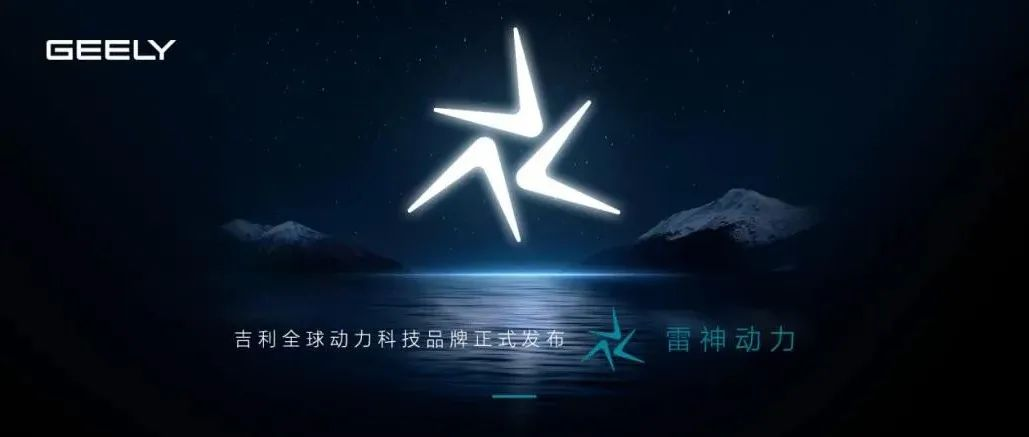Author: Xie Ruxin
On the evening of October 31, 2021, Geely Automobile Group held the “Intelligent Geely 2025 – Geely Longwan Technology Summit and Global Power Technology Brand Launch” event at the Hangzhou Bay Research Institute. At the press conference, Geely Automobile Group CEO Gan Jiayue released the “Intelligent Geely 2025” strategy and the “Nine Longwan Actions” for the comprehensive promotion and implementation of “Intelligent Geely 2025”.
The content of the press conference covers thunder power, energy, manufacturing, service systems, and enterprise and brand planning. The grand vision is breathtaking: Geely, are you really doing well like this? Will this scare the competitors?
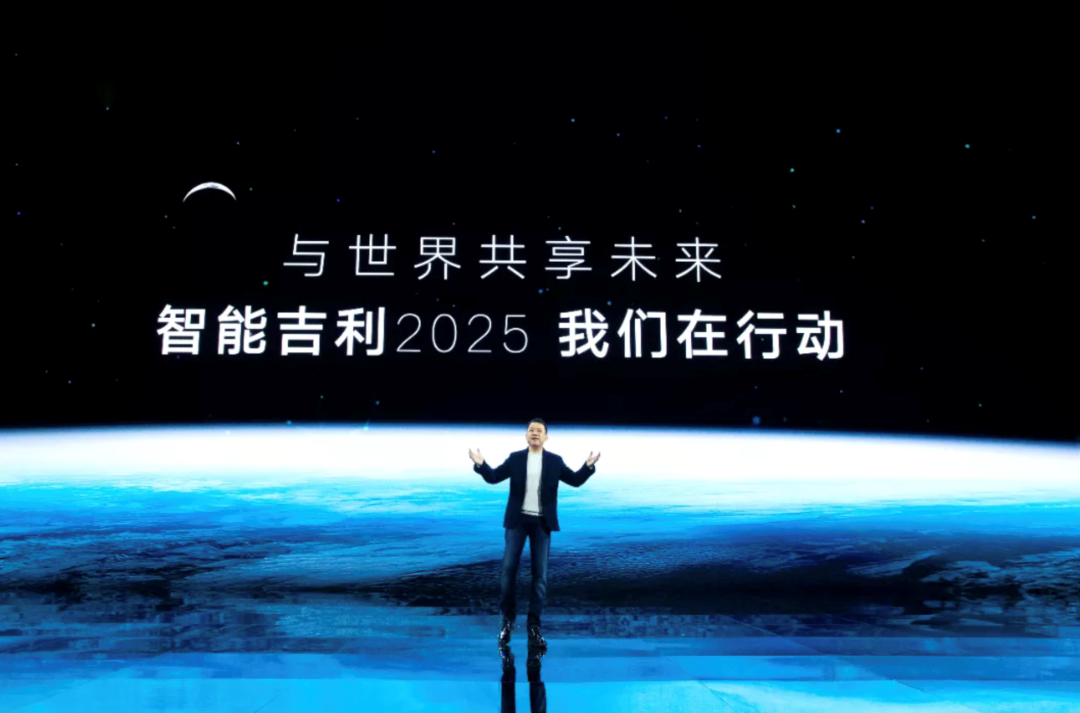
The information disclosed at the press conference is unprecedented, and any part of it can hold a separate press conference. Therefore, this article tries to use concise language to express it clearly.
Thunder Power
Thunder power is not just a power system. Geely has positioned it as a power technology brand with a business scope that includes fuel engines, fuel automatic transmissions, hybrid engines + hybrid automatic transmissions, and drive motors.
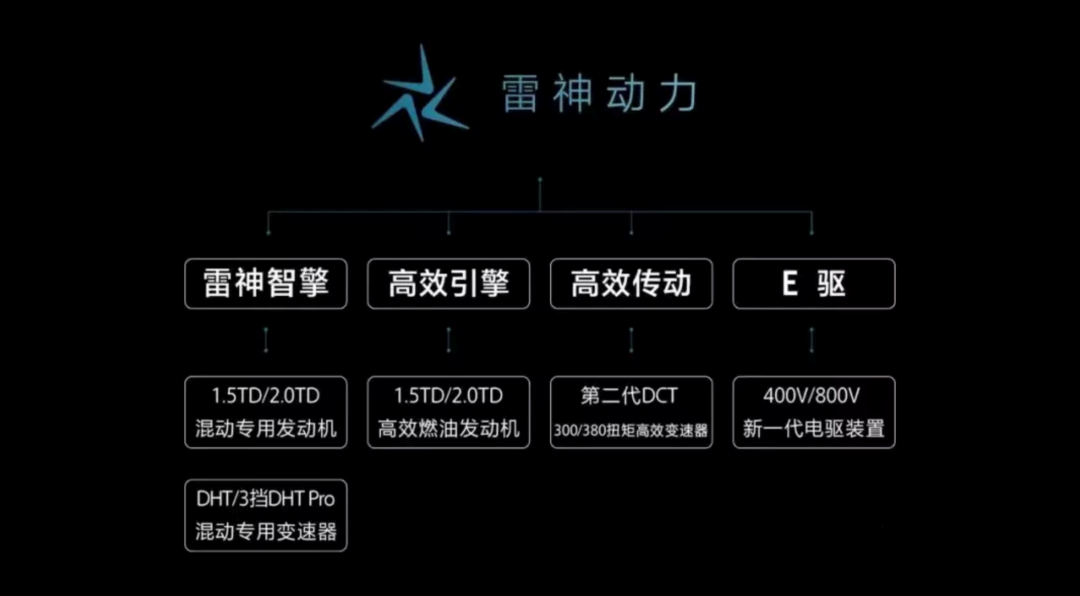
The new fuel engines, codenamed BHE20 and BHE15, correspond to 2.0T four-cylinder and 1.5T three-cylinder respectively. The specific parameters have not been announced, and it is estimated that they are improved versions of the current models.
The new fuel automatic transmissions (dual-clutch), codenamed EVO380 and EVO300, can withstand maximum torques of 380 N·m and 300 N·m respectively. They will be applied to more than 20 models including Geely and Lynk & Co in the future.
The new hybrid engine, codenamed DHE15, has a maximum power of 110 kW and a maximum torque of 225 N·m. It adopts multiple technologies and its thermal efficiency reaches 43.32%, which is higher than that of BYD (43%), Honda (40.6%), and Toyota (41%), setting the world record for the highest thermal efficiency of mass-produced hybrid engines.
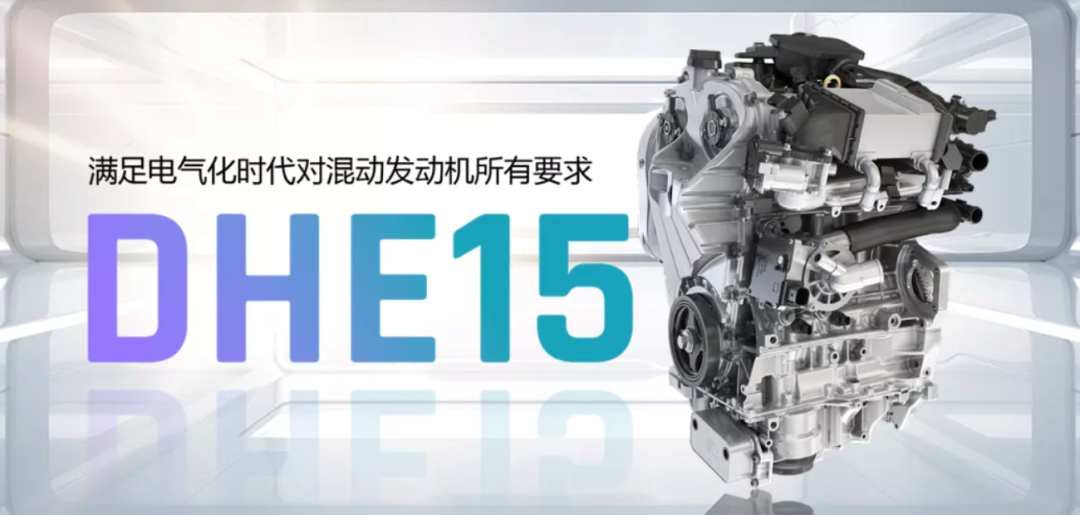
The new hybrid automatic transmission, codenamed DHT Pro, adopts a three-gear and dual-motor structure, which can cover a wider range of efficient driving intervals. The whole power system has a NEDC fuel consumption of 3.6 liters per hundred kilometers. In addition, this transmission is not voluminous despite its complex structure. Its weight is controlled at around 120 kg, and the axial length is 354 mm, making it the smallest hybrid automatic transmission in the world in terms of axial length.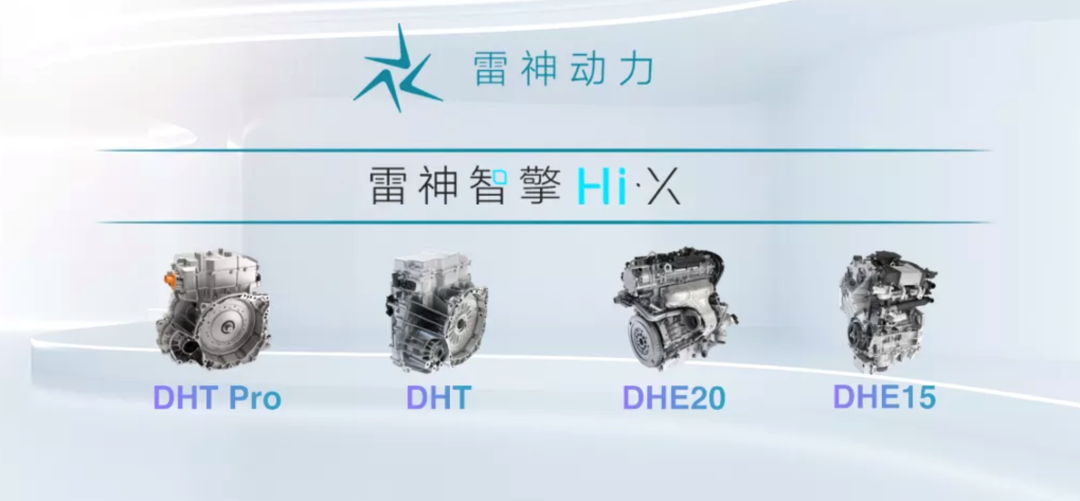
Geeley’s new electric drive motor is based on a 400V and 800V pure electric architecture. The maximum power of the 800V electric drive can exceed 475 kW, enabling the vehicle to accelerate from zero to one hundred in under 3 seconds. It is scheduled for mass production in 2023.
Thunder Power will compete with the world’s most advanced power solutions, while Geeley is ready to supply powertrains to the world.
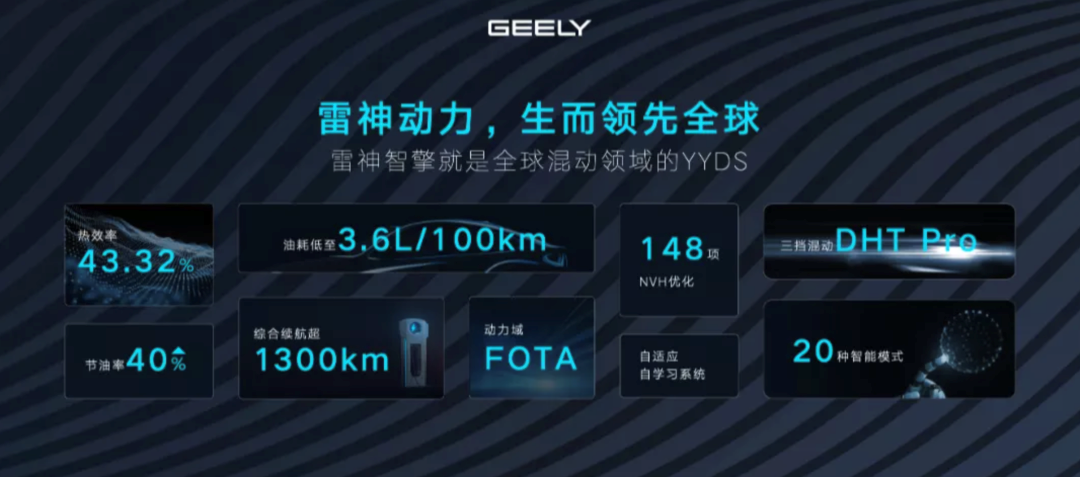
Energy, Manufacturing, and Service System
Geeley will launch its exclusive battery-swapping system and plans to set up 5,000 ultra-fast charging stations across 100 core cities by 2025 to meet the needs of one million electric vehicles.
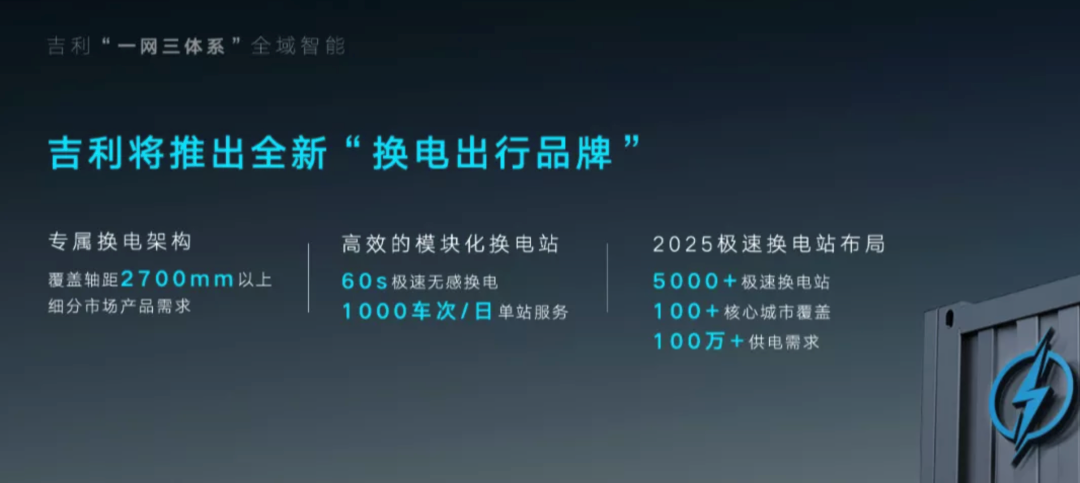
Geeley will release methanol-powered vehicles with a travel cost of 0.3 yuan per kilometer by 2022, lowered to 0.2 yuan by 2025.
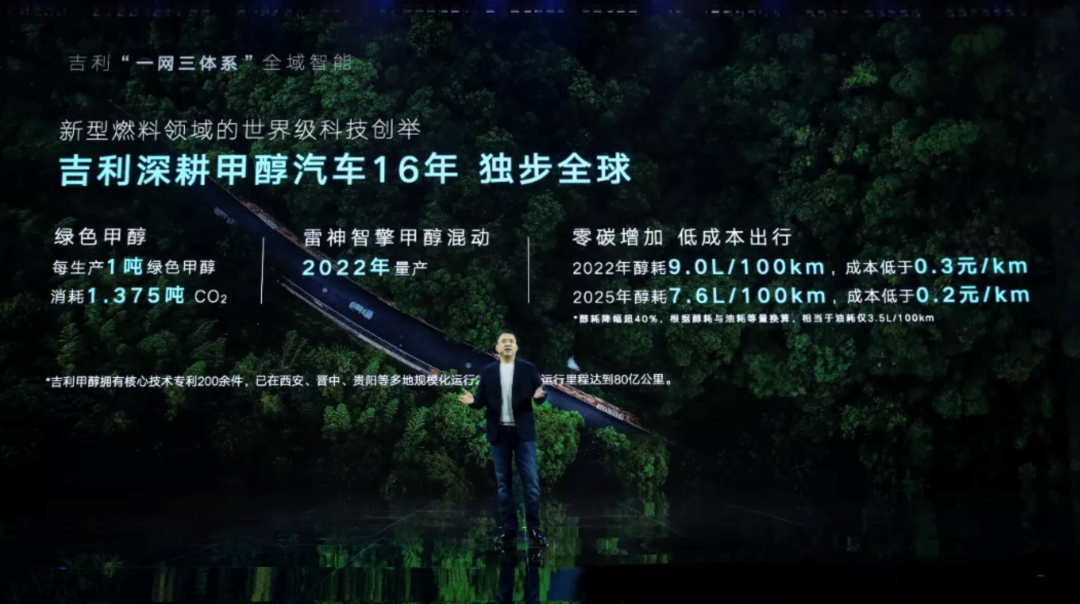
Geeley has mastered module and pack technology, realized mass production, and acquired expertise in battery design. Furthermore, it has cooperated with strategic partners to establish joint venture battery factories such as Era Geeley, forming a diversified battery layout.
Geeley has completed self-research on core processes such as chip design, operation systems, software, and data collection and analysis. Currently, the company has self-developed the first 7 nm car-grade chip in China and successfully produced it in small quantities. After certification, it will be mass-produced next year. In addition, by 2024-2025, a 5 nm chip will be released, with a computing power of up to 256 TOPS, meeting the needs of L3 and above autonomous driving.
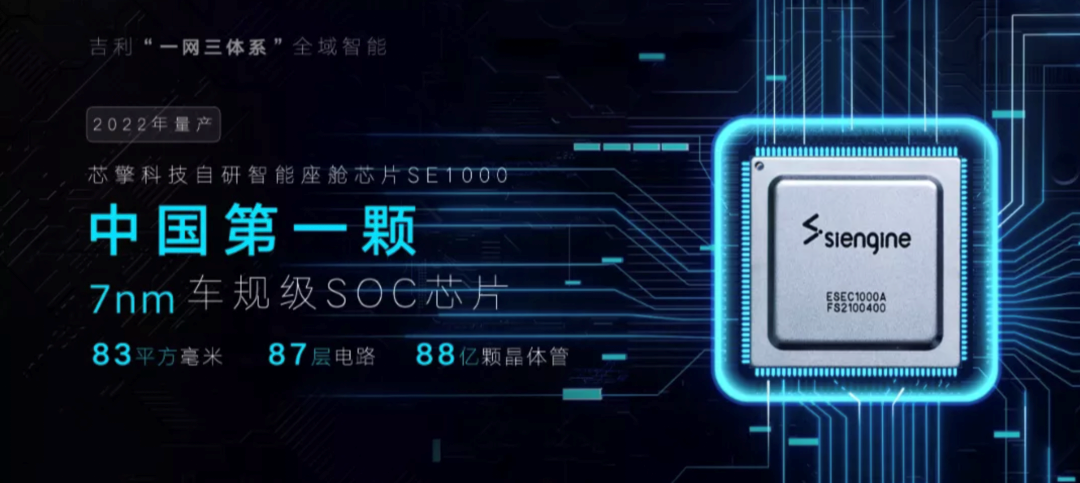
Geeley is creating a carbon-neutral factory that achieves zero wastewater emissions, zero waste landfilling, and zero harmful emissions during the manufacturing cycle.
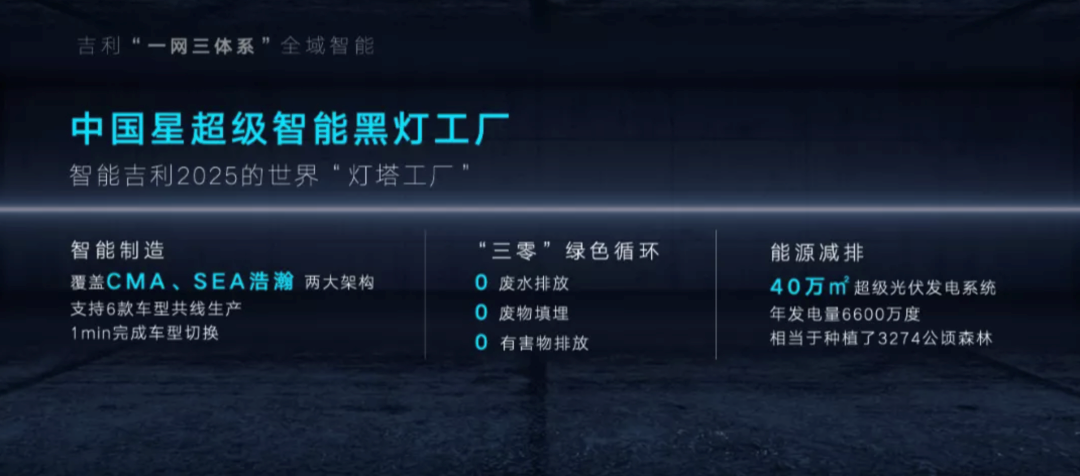
Geeley is developing its low-orbit satellite to achieve high-precision map positioning. By the end of 2026, they plan to have completed the deployment of 72 IoT communication satellites and 168 navigation-enhanced low-Earth orbit satellites.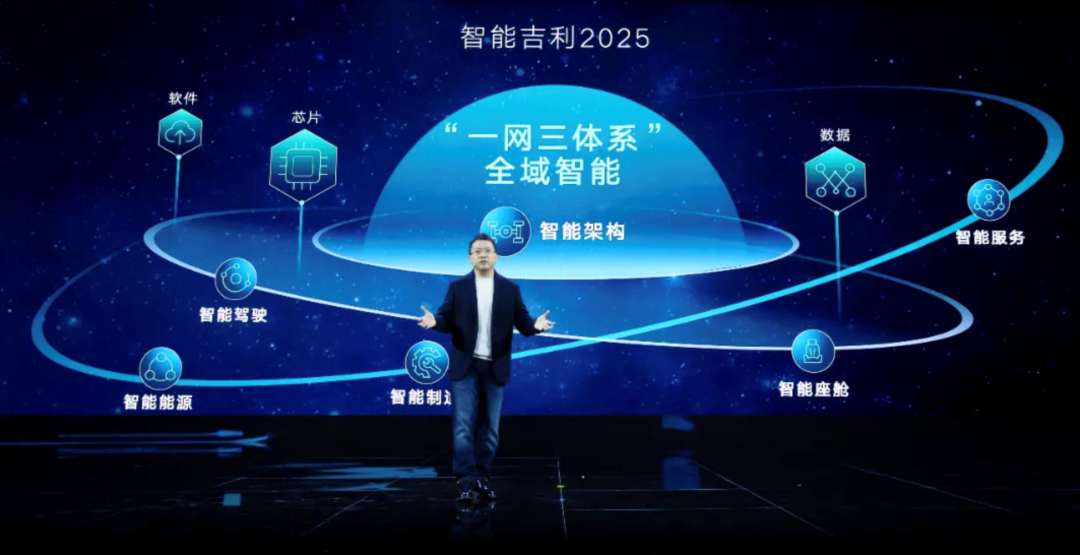
The goal is to build over 2,000 digitalized smart stores, achieve over 10 million APP users with 100% direct connection and have user feedback addressed within 24 hours.
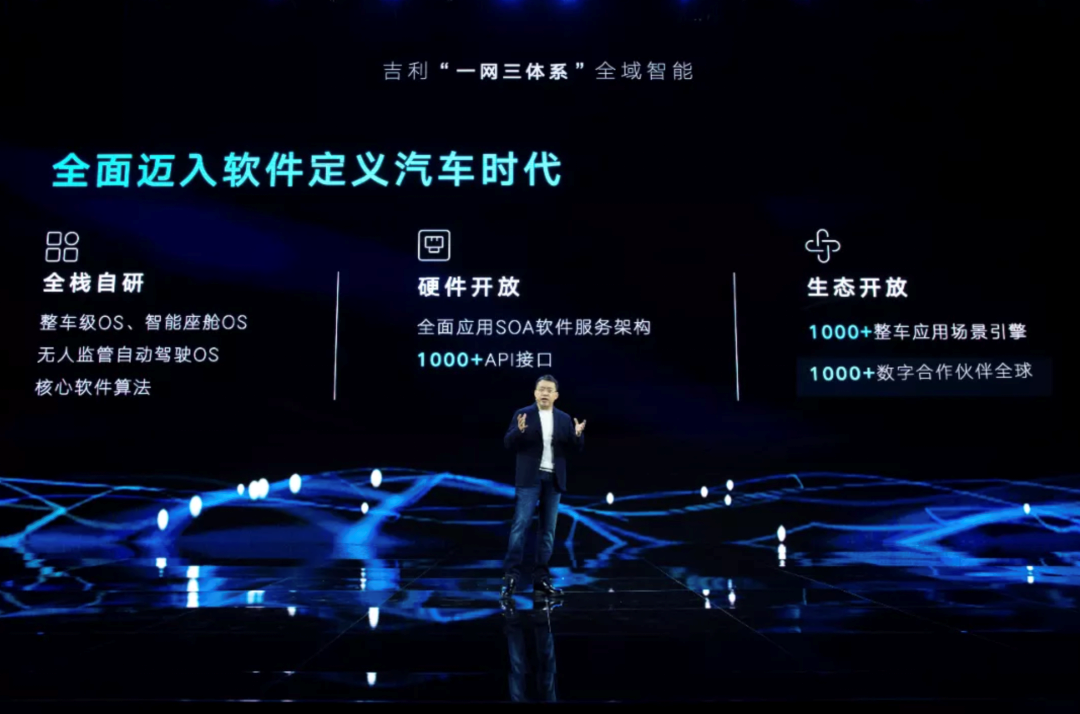
Nine Actions in Longwan Bay to Support Enterprise and Brand Planning
-
Invest RMB 150 billion in R&D within 5 years.
-
Commercialize L4 level autonomous driving by 2025 and fully master L5 level autonomy.
-
Launch over 25 new intelligent and new energy products within 5 years.
-
Achieve a total group sales volume of 3.65 million vehicles in 2025, including 650,000 vehicles from Geely’s technology brand and 3 million from Geely Automobile Group.
-
Achieve overseas sales of 600,000 vehicles in 2025.
-
Reduce carbon emissions by 25% by 2025 and achieve carbon neutrality by 2045.
-
Achieve 100% full-scenario digital value chain for mobile terminals.
-
Achieve an EBIT (earnings before interest and taxes) of over 8% in 2025.
-
Issue 350 million shares for the first batch of incentive of 10,000 employees.
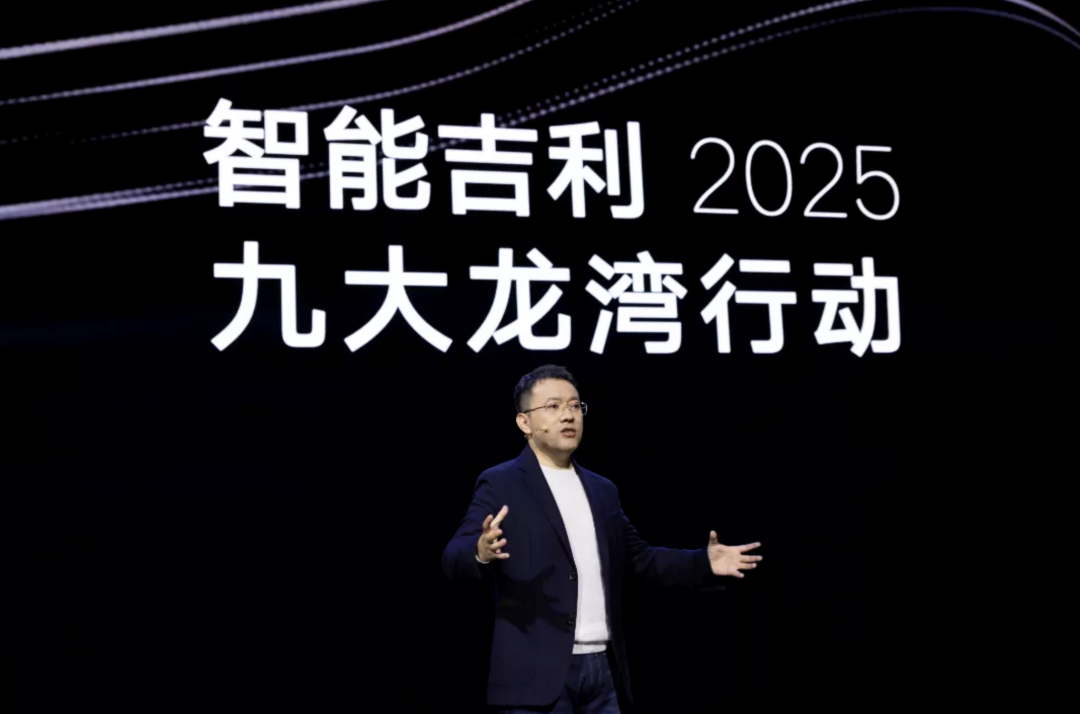
Some of these actions are part of Geely 2025 strategy while others are necessary to achieve the goals of the strategy.
The “Smart Geely 2025” strategy’s mission and goal are to create smart travel experiences that exceed user expectations, to build a leading global automotive company driven by technology, and to become China’s most competitive and respected automotive brand.
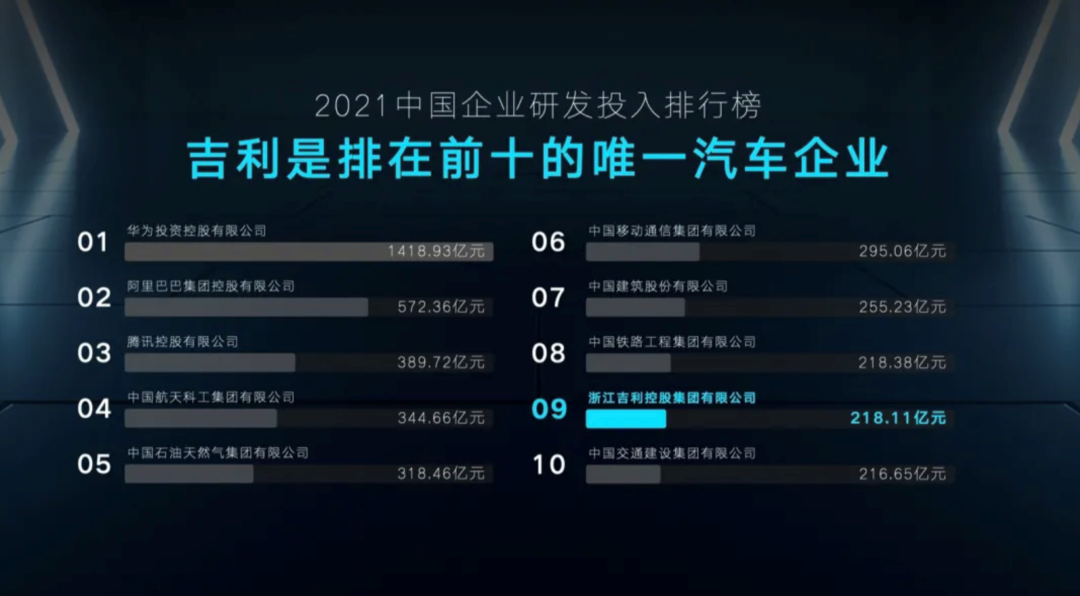
In the previously released “2021 China Enterprise R&D Investment Ranking,” Geely was the only automobile enterprise among the top 10, ranking ninth along with other technology giants and state-owned enterprises such as Huawei. According to Geely’s declaration of investing RMB 150 billion in R&D over the next five years, it will continue to be the largest Chinese-owned automotive brand in terms of R&D investment.
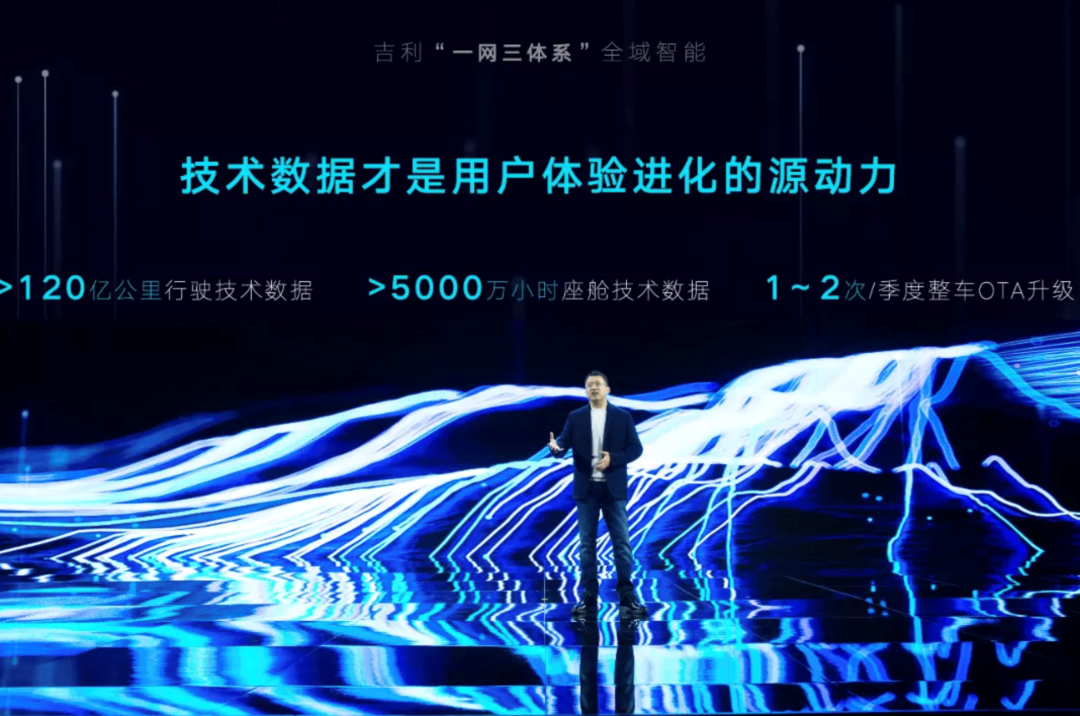 In 2007, Geely declared a strategic transformation, shifting from engaging in price wars to waging wars in technology, brand, service, and ethics. In 2014, Geely set “making high-quality cars for everyone” as its manufacturing philosophy, initiating its journey of value marketing. As of 2020, Geely has developed four major modular architectures including CMA, BMA,SPA, and SEA, embarking on a new era of architecture-based car-making.
In 2007, Geely declared a strategic transformation, shifting from engaging in price wars to waging wars in technology, brand, service, and ethics. In 2014, Geely set “making high-quality cars for everyone” as its manufacturing philosophy, initiating its journey of value marketing. As of 2020, Geely has developed four major modular architectures including CMA, BMA,SPA, and SEA, embarking on a new era of architecture-based car-making.
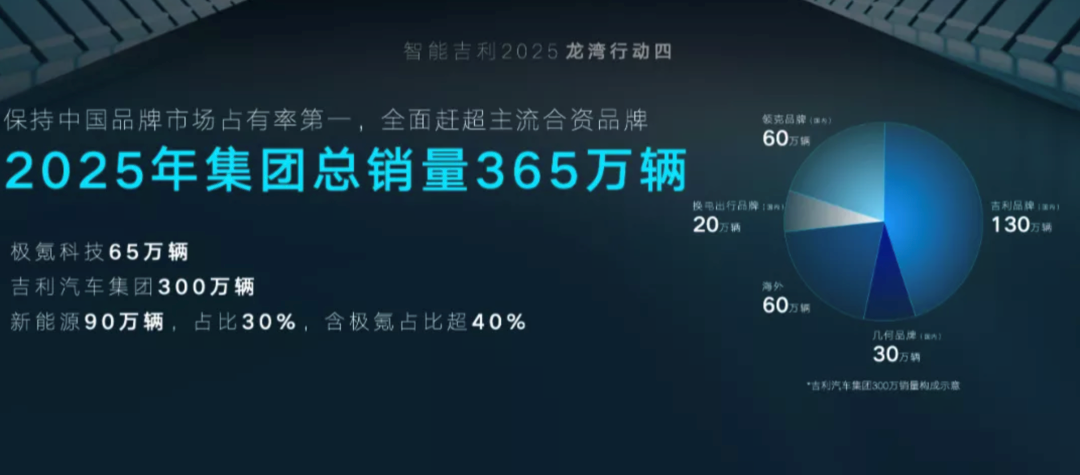
Since entering the automotive industry in 1997, Geely has grown into a globally influential automotive group and has been named in the Fortune 500 for ten consecutive years. Every transformation by Geely is filled with challenges, and it is the accumulation of foundation and internal cultivation that endows Geely with the confidence to serve over 1.2 million users globally.
Despite the tumultuous waves, with one punch Geely surges ahead. We hope that by 2025, Geely will live up to its expectation of leading the world’s automotive and mobility industries, and contribute to the rise of China’s automotive industry in the 21st century, which will be recorded in a masterpiece like “A Broad and Turbulent River”.
This article is a translation by ChatGPT of a Chinese report from 42HOW. If you have any questions about it, please email bd@42how.com.
